In the golden age of education, that some politicians would still like us to return to, we were told that Europeans, preferably British, discovered everywhere, Europeans invented just about anything of any use and made the important scientific breakthroughs. When the rest of the world was mentioned it was likely to be with reference to what a marvellous job we had done bringing our enlightened values to their barbarian darkness. Of course I am being a tad facetious but it’s fair to say that Uzbekistan, or its earlier incarnations didn’t feature anywhere in my school history lessons and Central Asia didn’t warrant much more of a mention beyond acknowledging the existence of the Silk Rd. I have no doubt that the history curriculum will have improved since I was at school but if Uzbekistan’s profile has not risen it would be a great pity. History teachers out there I beg to hear what the curriculum offers us now on the region.
We may have understood that China was worthy of a mention for the inventions of silk, gunpowder and paper but it was not the Chinese who brought them to our doorstep, so why no mention of the Sogdians, Tocharians and Turks, amongst others who facilitated the great west-east exchange along the Silk Road. We can thank the Arabs in Samarkand, now in Uzbekistan, for bringing us the methods of paper making, from Chinese captured at the battle of Atlakh in 751. It was the much maligned Mongols who learnt the secret of gunpowder, which in turn allowed us Europeans to kill each other with greater efficiency for the following centuries. In fact it is only due to the huge and stable empire that Chinggis (formerly known as Genghis in the West) Khan created that it was safe enough for the likes of Marco Polo to reach China. Whilst on the subject of Polo it seems reasonable to ask, why no mention of Rabban Sauma? This Chinese, Nestorian Christian made the journey, as the Mongol ambassador, in the opposite direction a little earlier, even gaining an audience with the Pope and Edward I of England. And why could a Christian think of making such a journey? Because under the Great Khan’s rule there was freedom of worship for all religions, far more civilised than the regular ethnic cleansing and persecutions in Europe for those of the wrong type of faith.
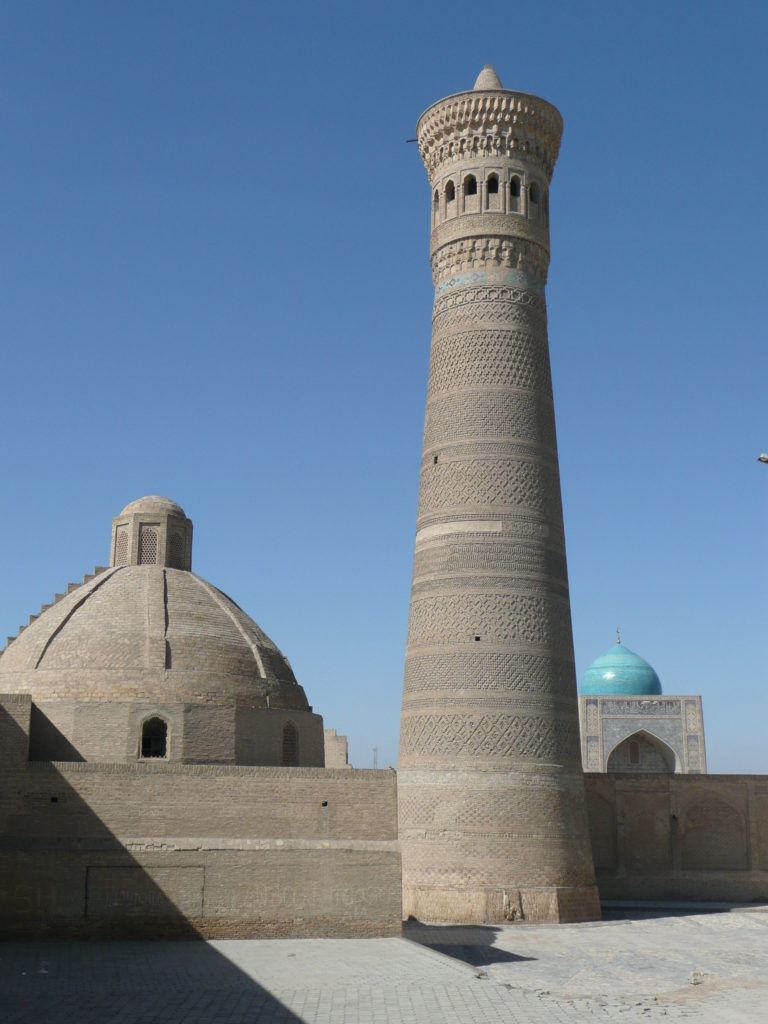
Kalon Minaret Bukhara – built in 1127 and conveniently also served as a means of executing criminals who were chucked off the top.
Bukhara and Samarkand, both in Uzbekistan, epitomise the importance of learning and Silk Rd trade in the history of the region, even today Bukhara remains a centre of Islamic scholarship. Both were great cities built on trading wealth before we were being civilised under the Roman sword. Often, achievements in Islamic science and culture are mistakenly attributed to Arabs, but it was Central Asia and Persia which provided many of the religion’s great thinkers. One such son of Bukhara was Ibn Sina (980 -1037) whose work on medicine remained a standard text for over 600 years and whose writings covered subjects as diverse as philosophy to geology. Around the same time Al Beruni from NW Uzbekistan was leading the field in astronomical calculations, it took 500 years for a European to improve on his accuracy for the calculation of the Earth’s circumference. Not content with one field of study he was an expert translator of Sanskrit and wrote knowledgeably on Indian geography, religion and mathematics. Ulugh Beg (1394-1449) in Samarkand furthered astronomy, his measurements of the Earth’s sidereal year and axial tilt were more accurate than those of Copernicus more than 100 years later. His data for the duration of the years of Venus, Mars, jupiter and Saturn have been shown to be only a few seconds out. Muhammad al Bukhari (810-870), whose mausoleum is near Samarkand was possibly the greatest writer on the traditions of the prophet in Sunni Islam and as important to the religion as, say Saint Augustine or Thomas Aquinas are to Christianity.

Kalta-minor minaret Khiva, would have been 2 to 3 times higher but the ruler who commissioned it inconveniently died before completion
Uzbekistan’s national hero Timur, only slightly better known in the West as Tamerlane may seem a controversial figure to some, given the death toll from his military campaigns. One of his more delightful traits was to construct towers using the still living to make an example of those who refused to submit to his will. But, like the most of human history the 1300’s were brutal times and how come Alexander the Great can be so-called for his ten-year killing spree around the Near East and whose drunken paranoia extended to killing allies who may have usurped his power, as well as the friend who had once saved his life. Timur was no less a great general, winning battles against overwhelming odds and creating a huge empire, admittedly not much longer lasting than Alexanders which started to disintegrate the moment he died. The aforementioned Ulugh Beg was Timur’s grandson, so along with his impressive architectural commissions, typified by the inspiring Registan in Samarkand, his legacy is by no means all bad.
In time-honoured fashion Central Asia has been dismissed as having a barbarian history, when the actions of its people were no worse than that of allegedly civilised Europeans or Chinese. Try reading European history and see how many years without war, massacres and treachery on a grand scale you can find, it doesn’t make bedtime reading for kids. Maybe instead you could tell them about the artists and craftsmen who created some of Islam’s most beautiful buildings and the scientists who were centuries ahead of us in Uzbekistan.




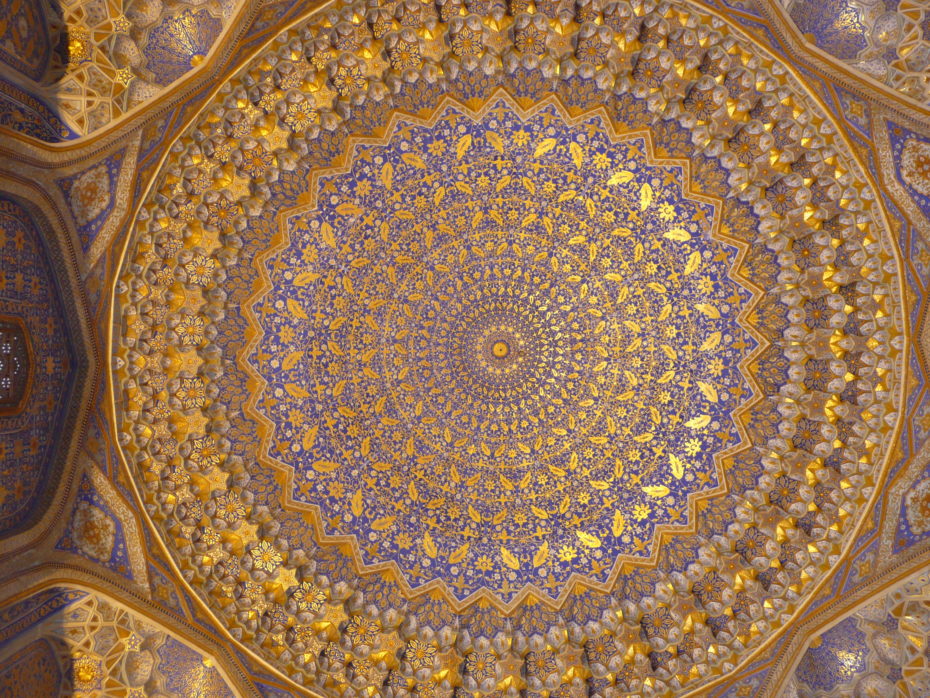
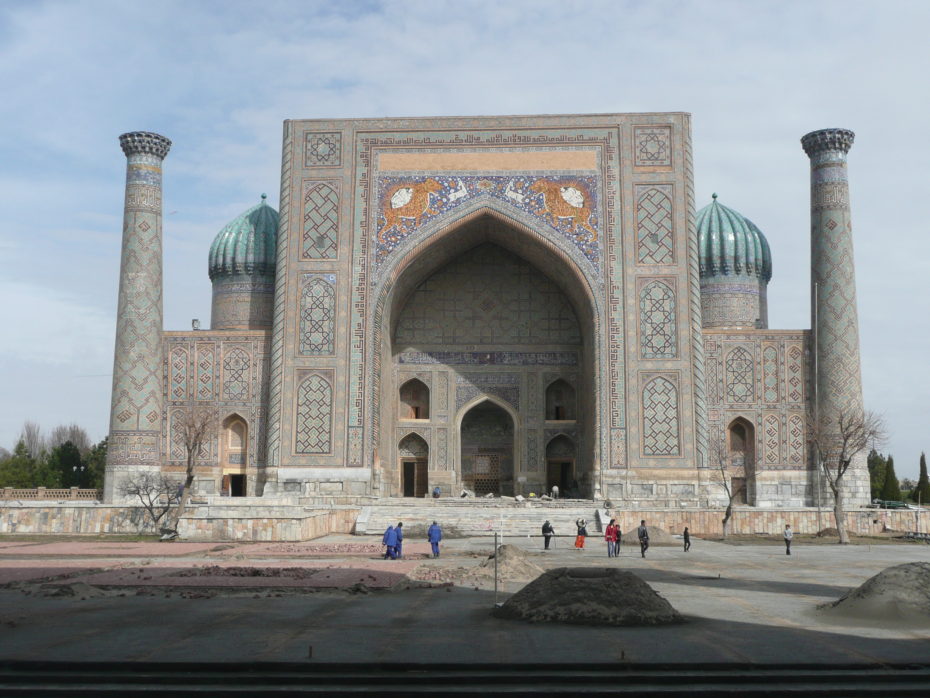
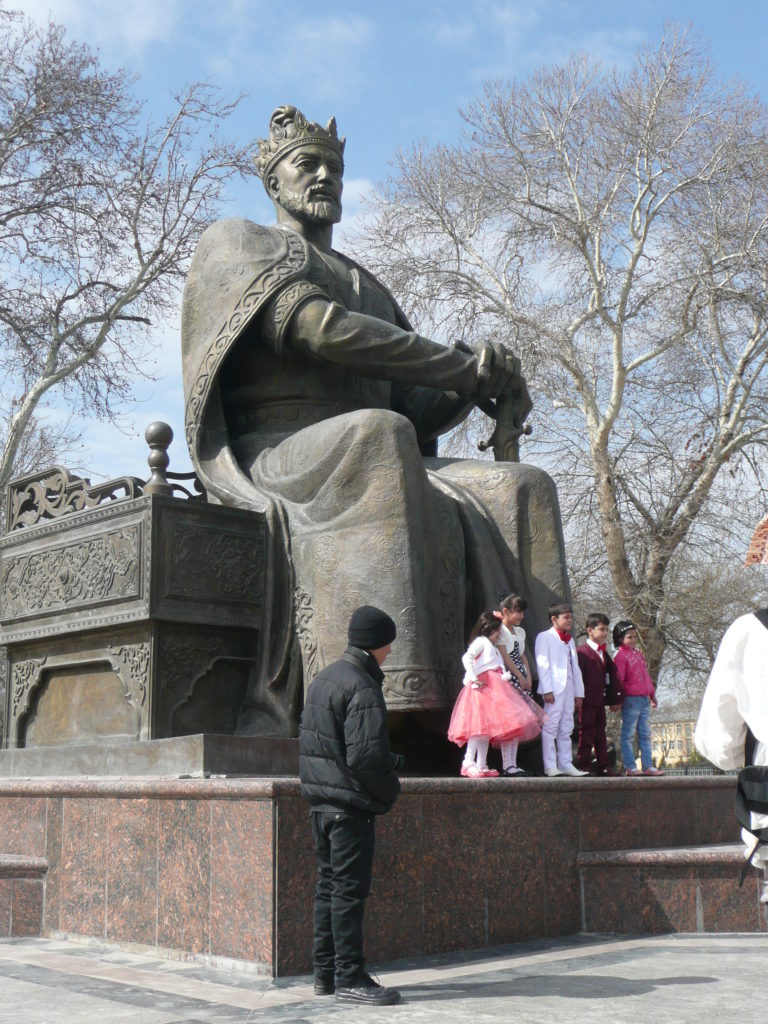
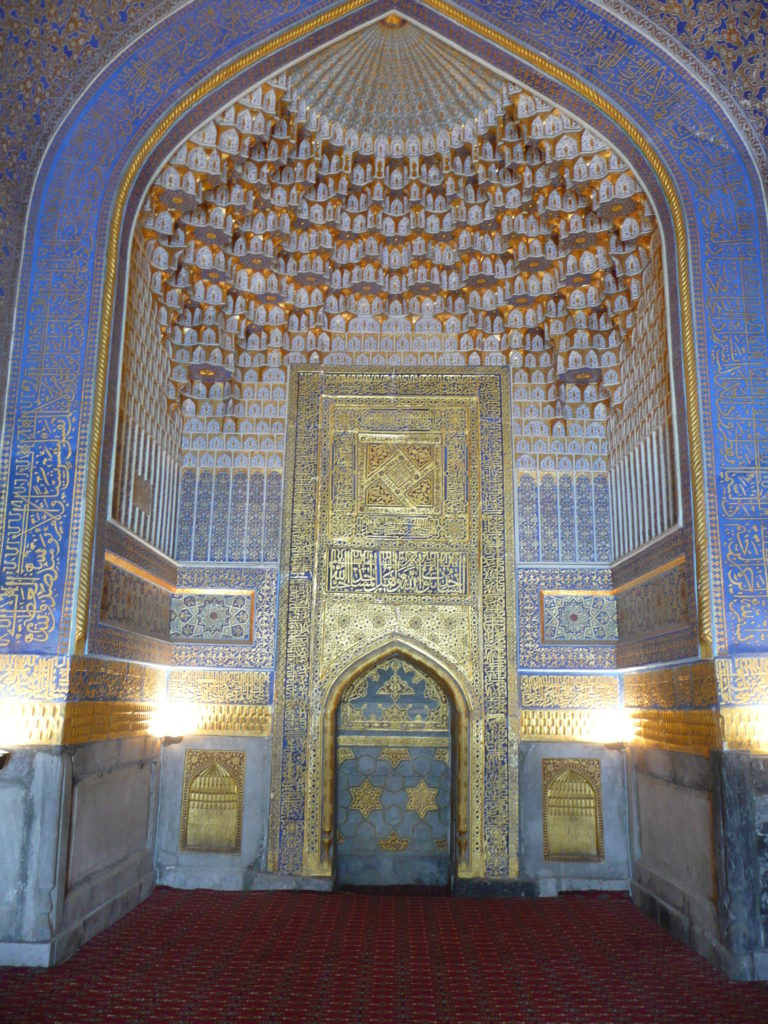

Fascinating stuff and great pictures.
Fantastic Graham best one yetxxJane
This is a fantastic post, I would love to visit Uzbekistan, particularly interested in Khiva actually. Seems so fascinating. I dream of travelling from Kashgar to Uzbekistan via Kyrgyzstan. Love from Jenny in Australia.
PS. for everyone interested in Uzbekistan, and the region in general, I really recommend “Shadow of the silk road” and “The lost heart of Asia” by Colin Thubron. Also, “A carpet ride to Khiva” by Christopher Aslan Alexander, and a modern day “speed travel” book called “Tearing up the silk road” by Tom Coote.
Thanks jenny and everyone else for the encouragement and reading recommndations. Providing I can get a China visa I will be goiong to Kashgar and beyond so stay posted for more material on your dream route in reverse.